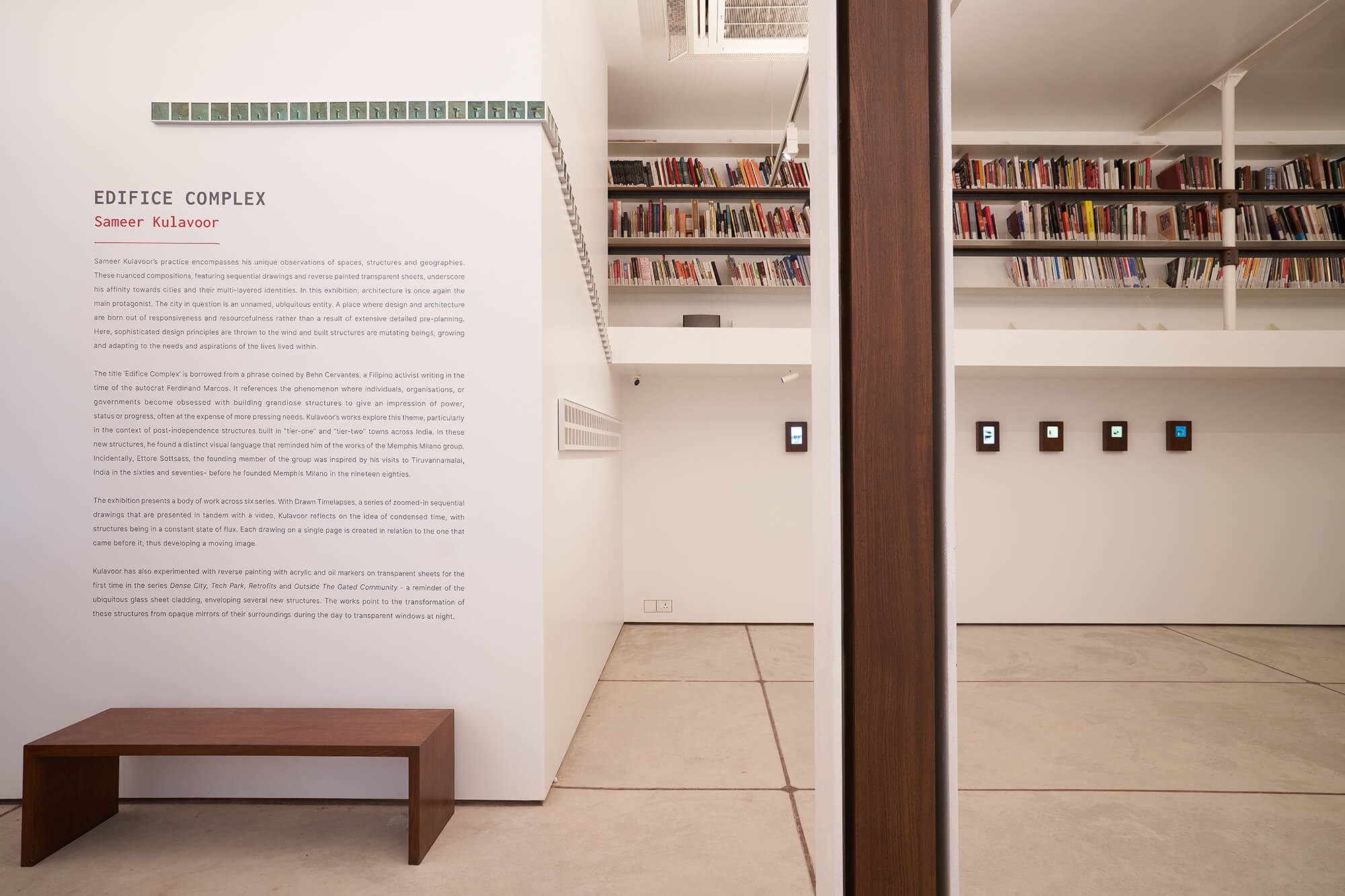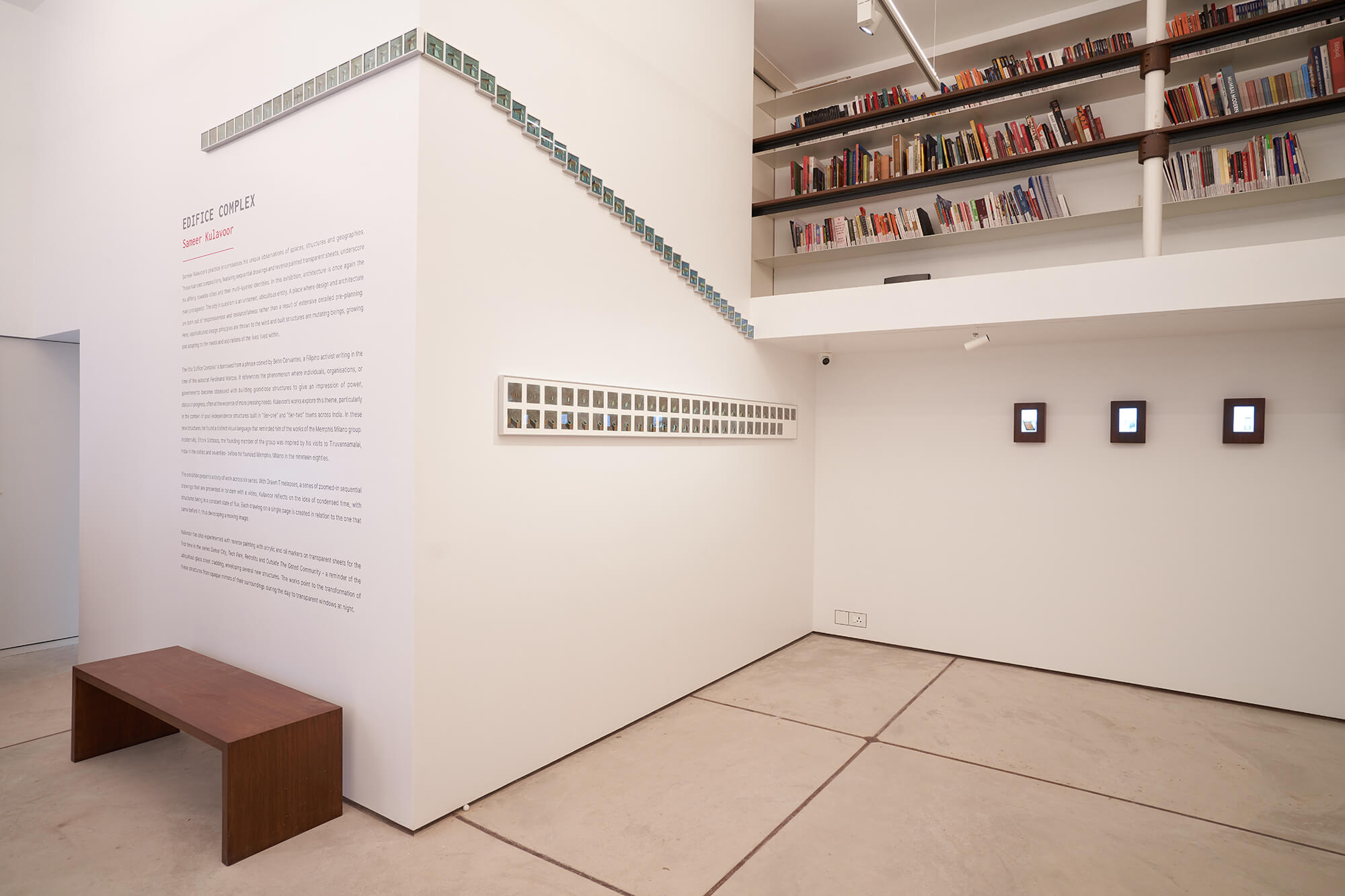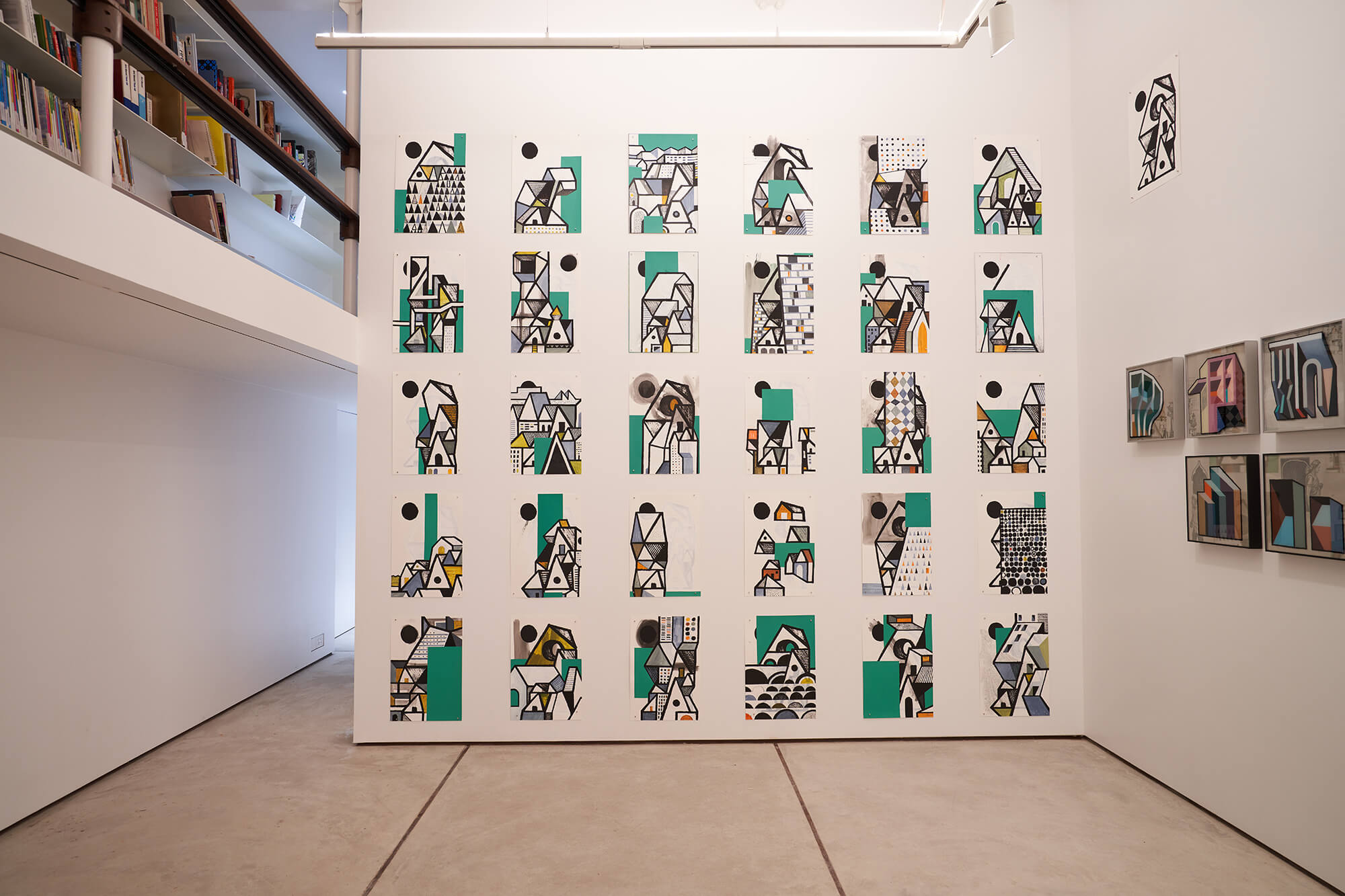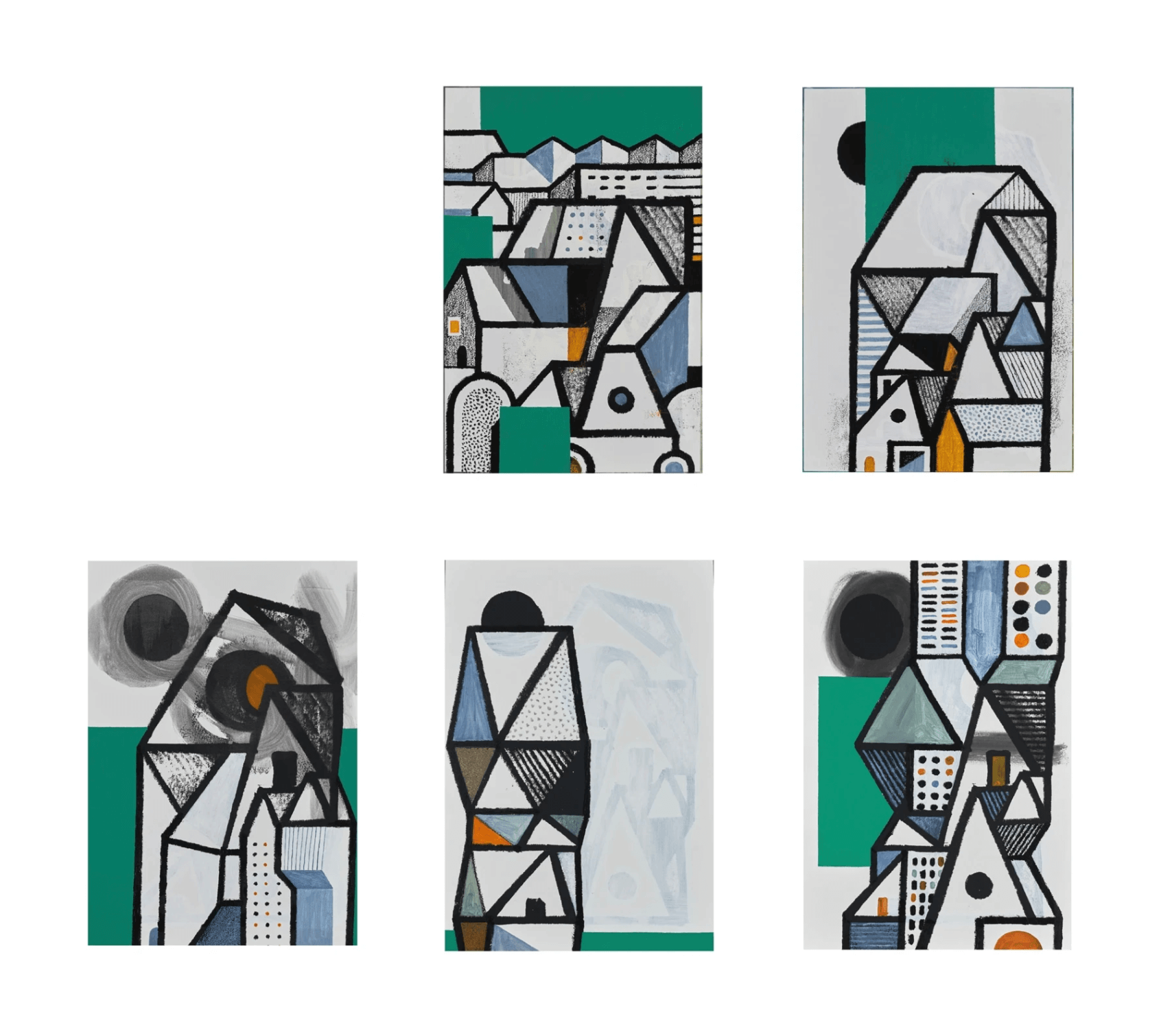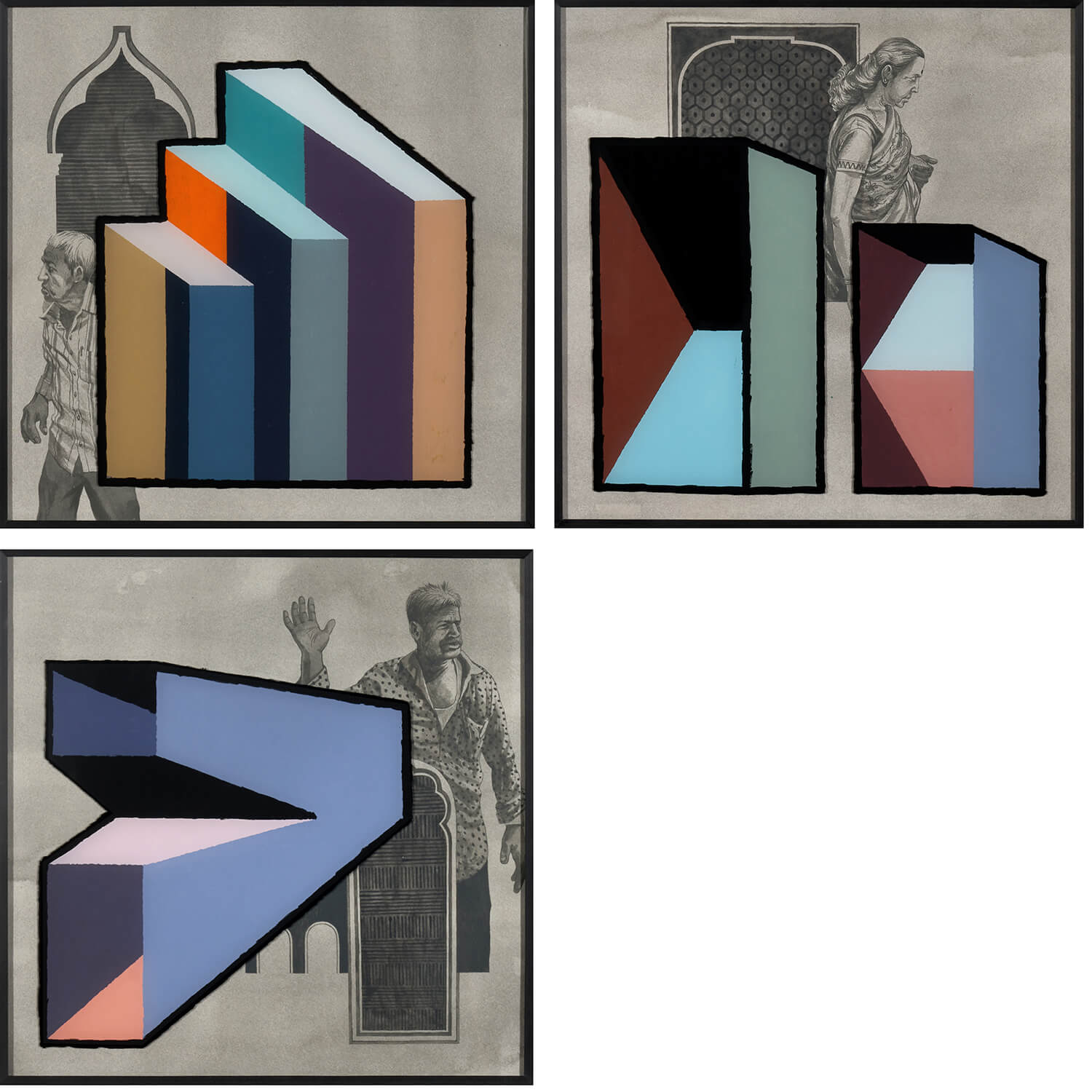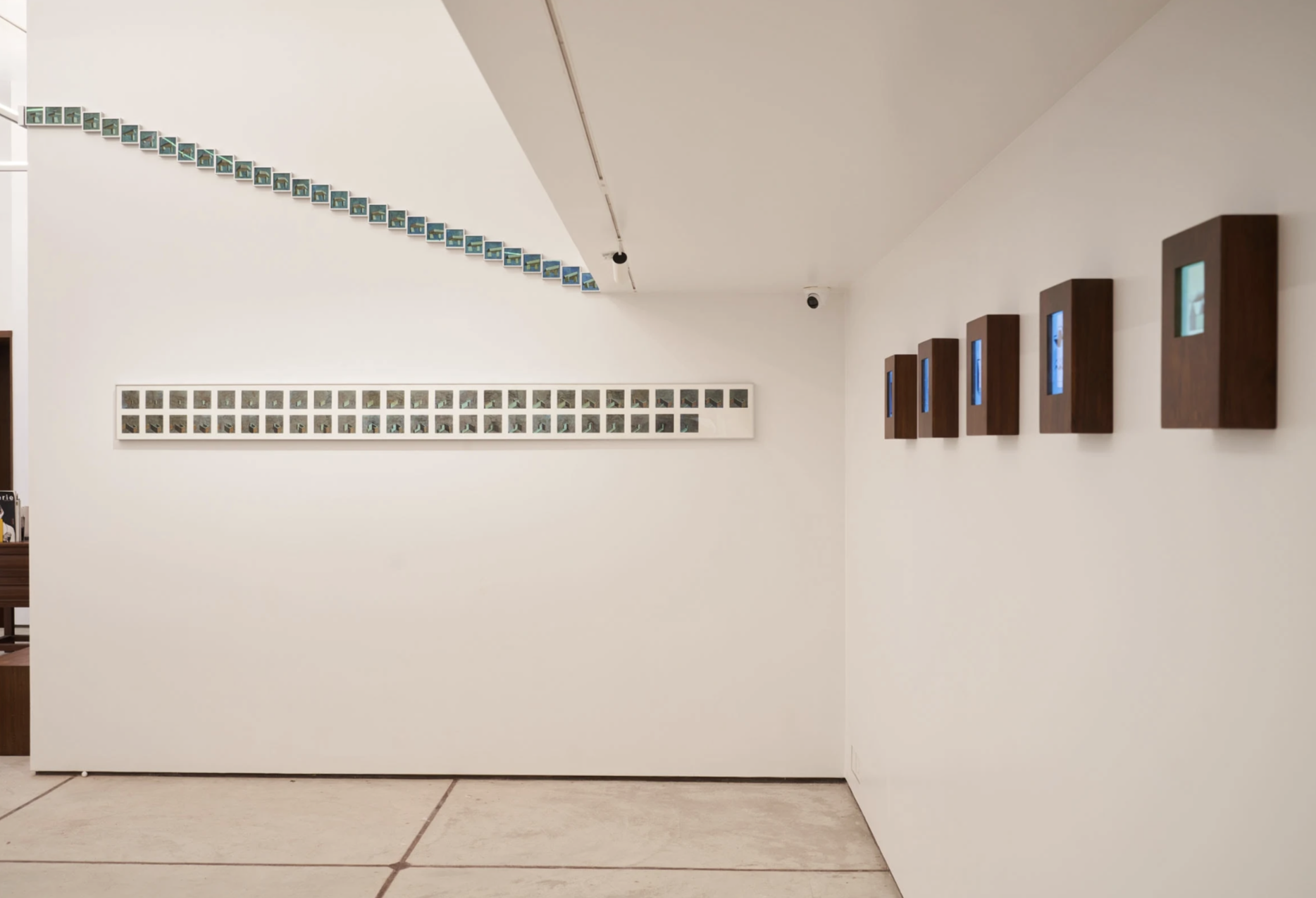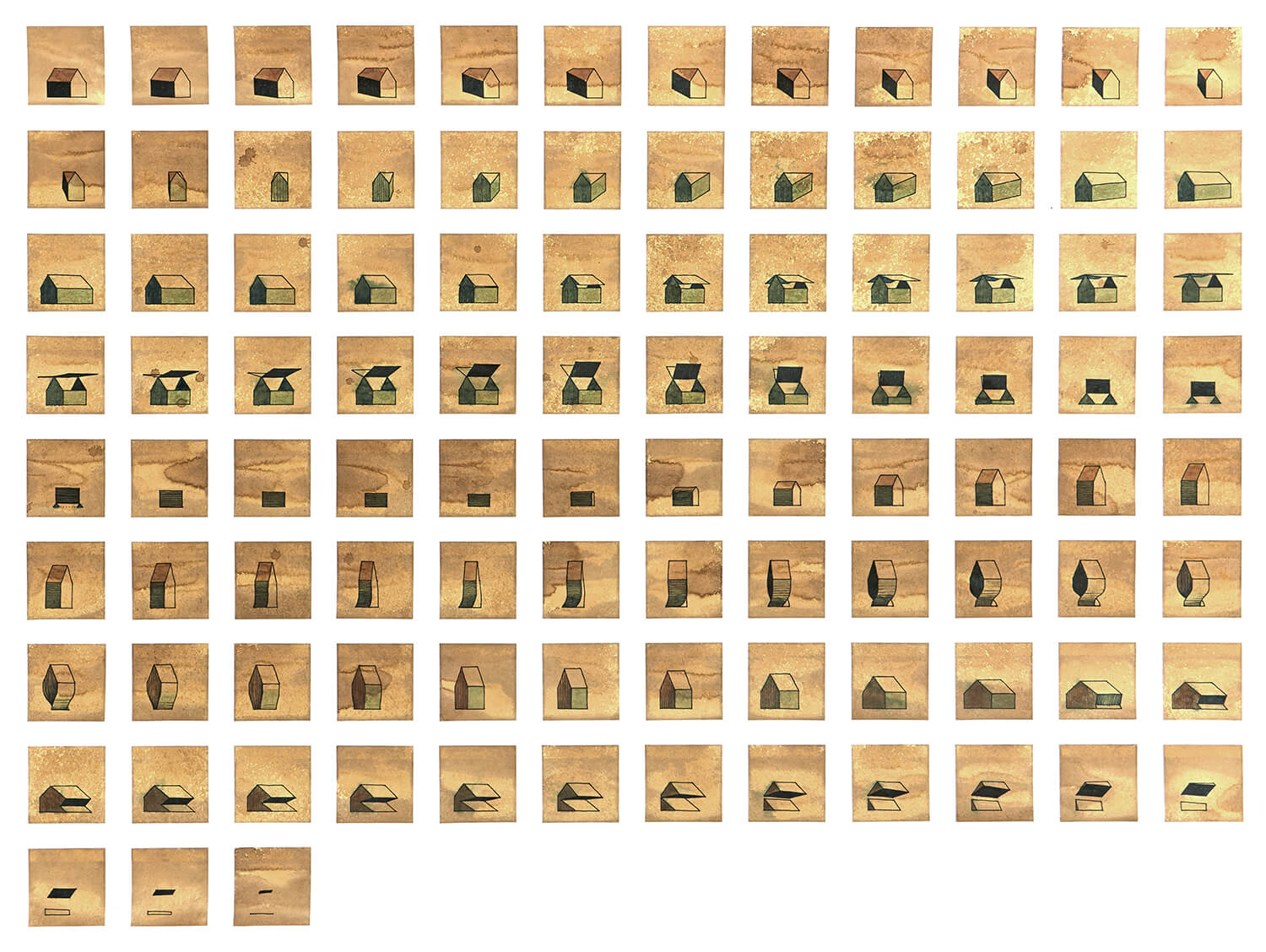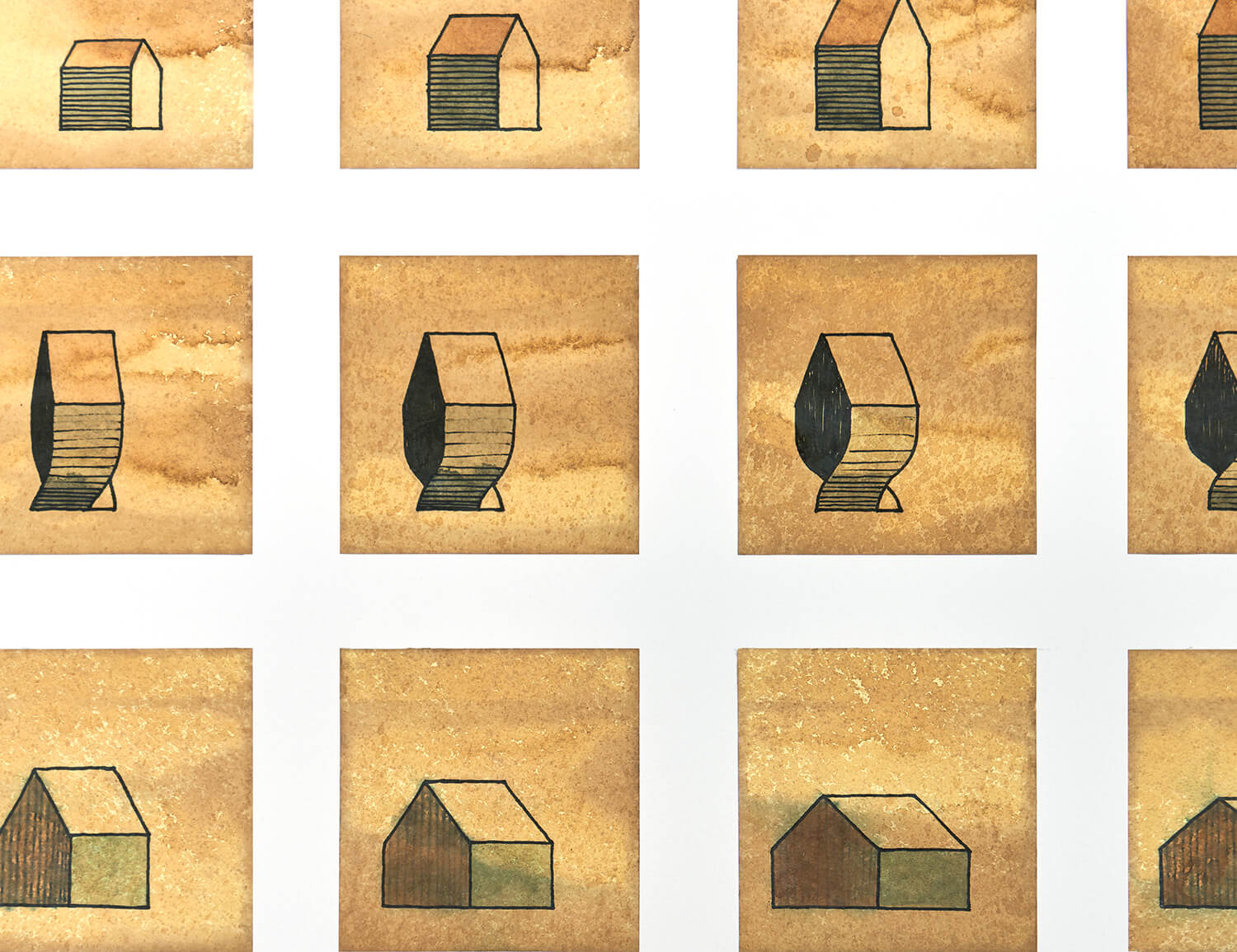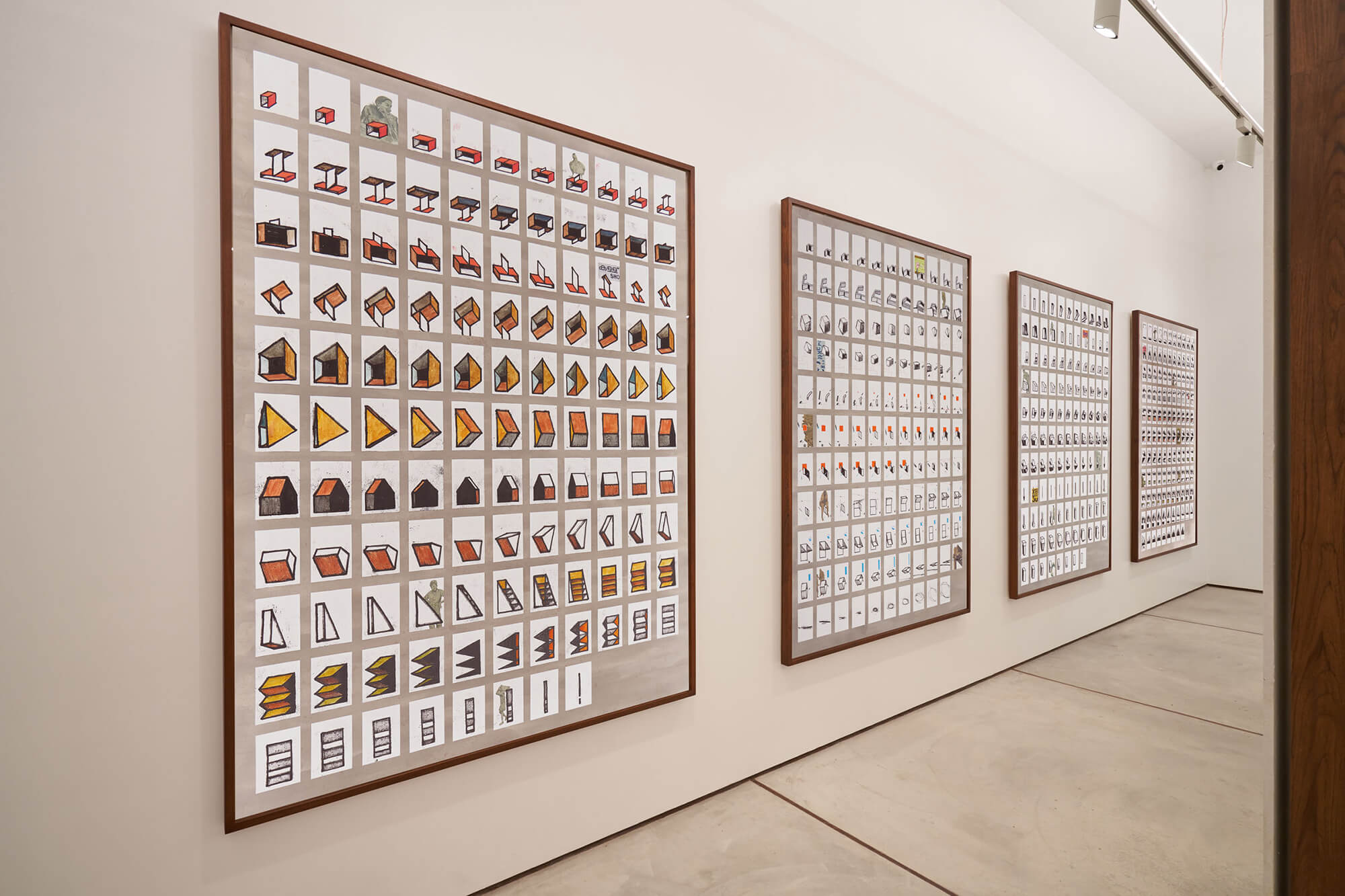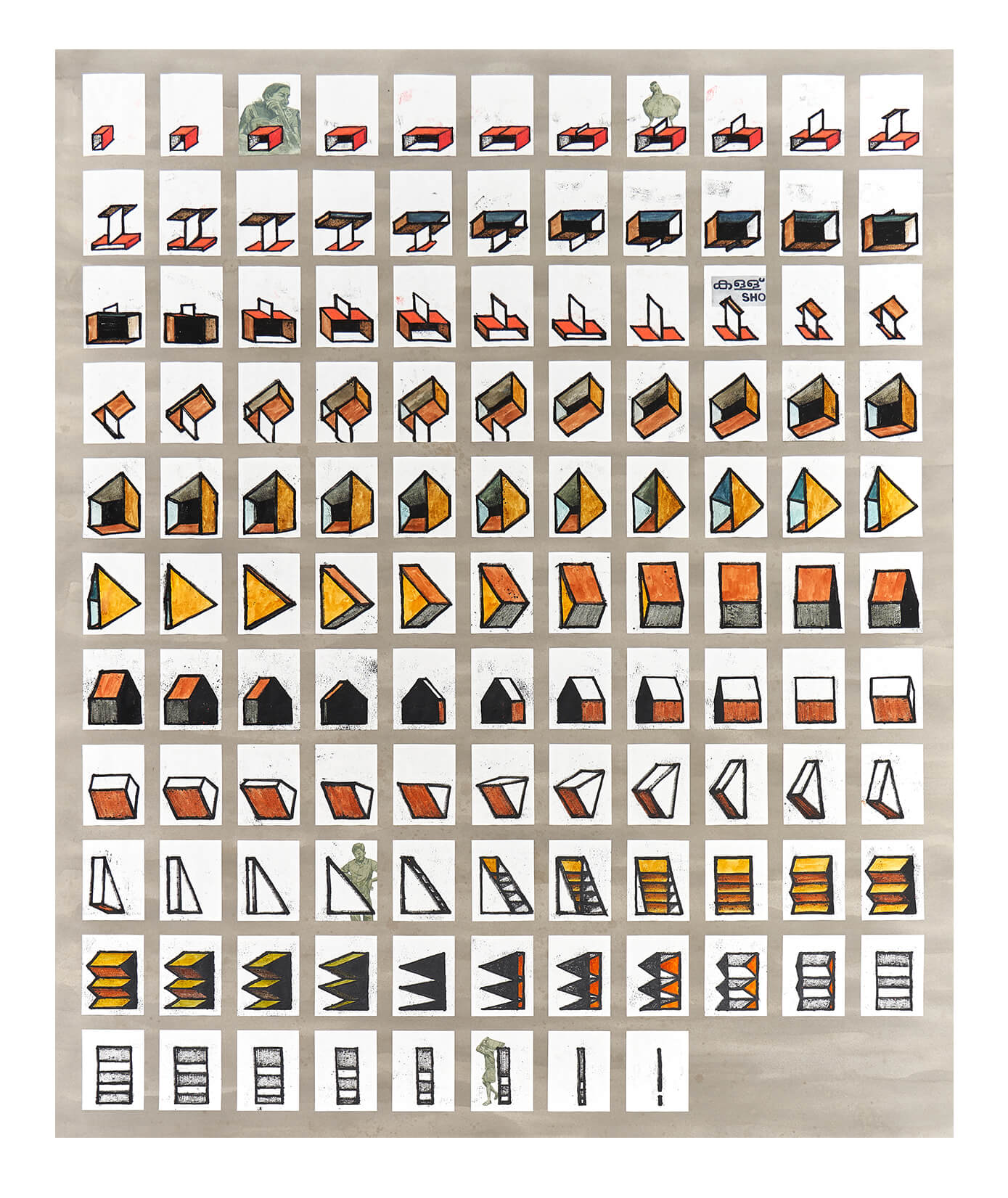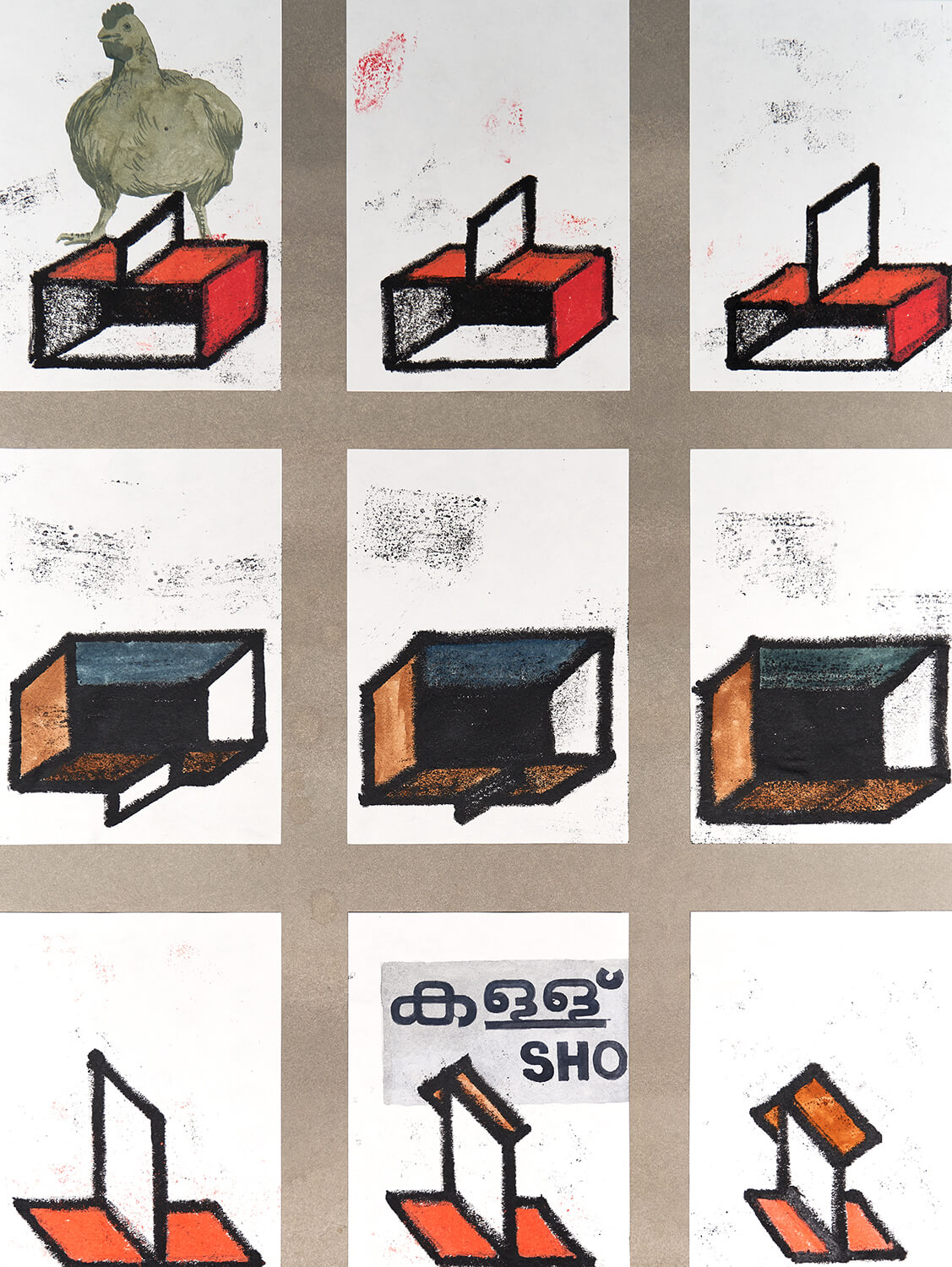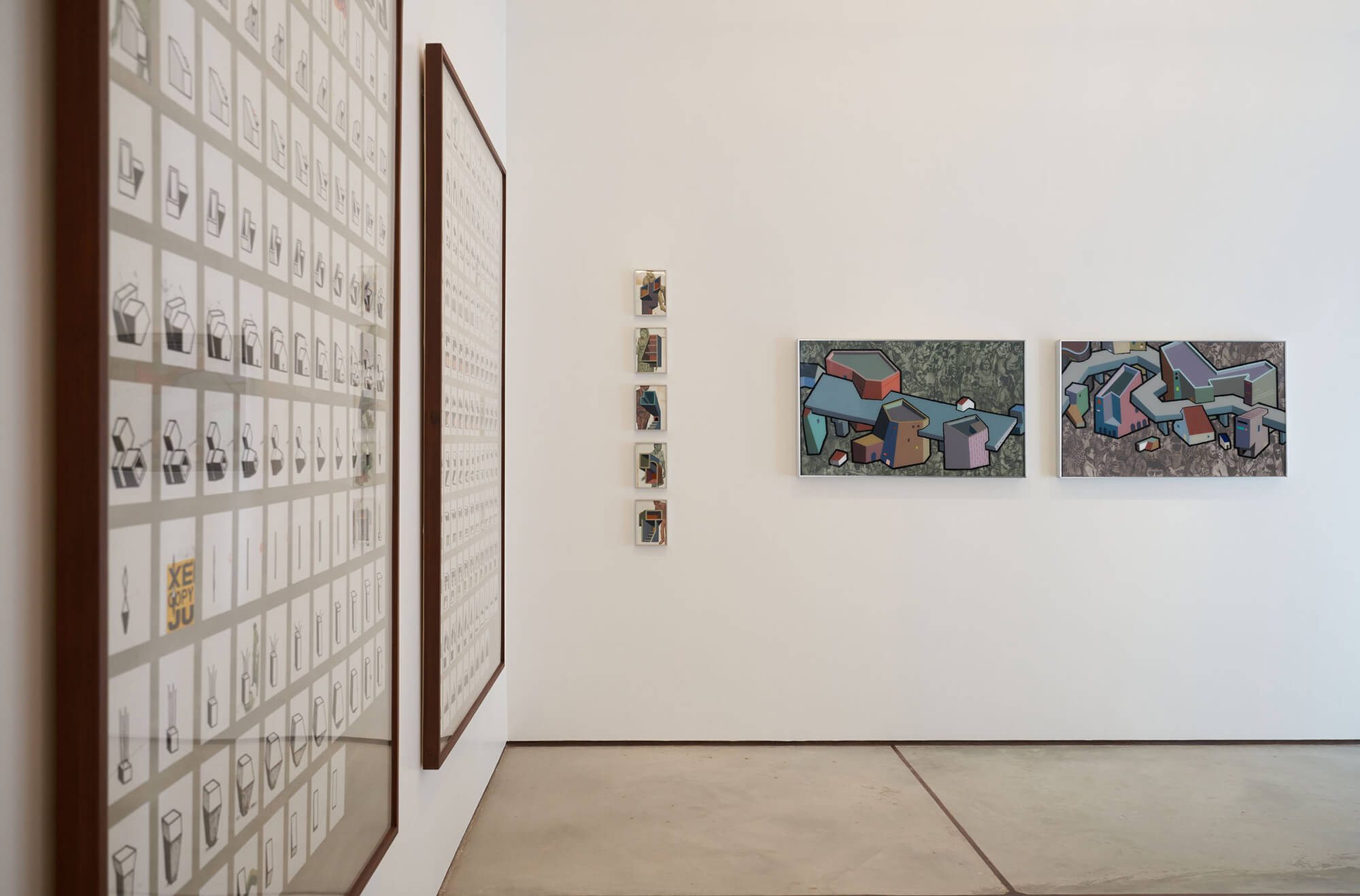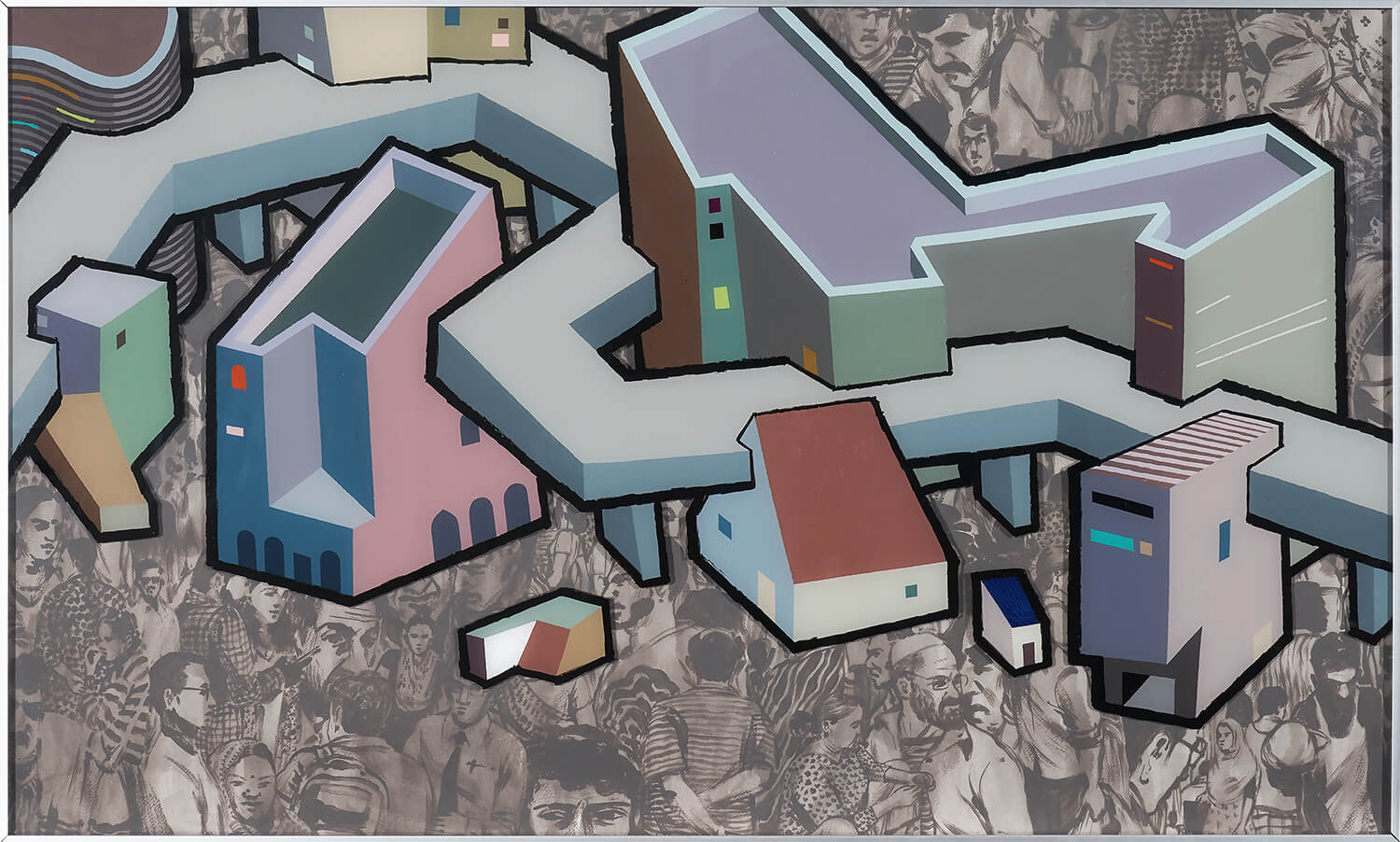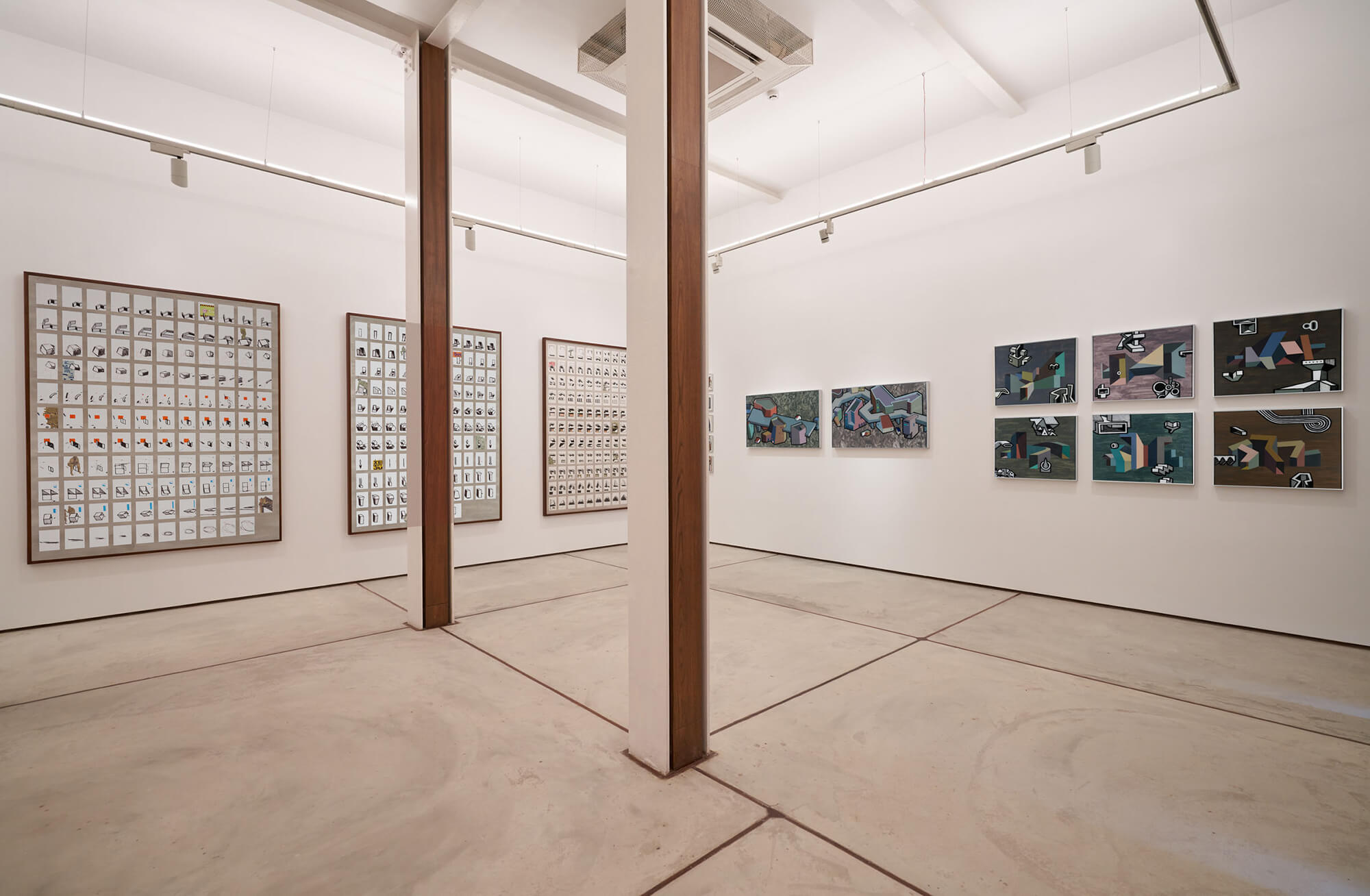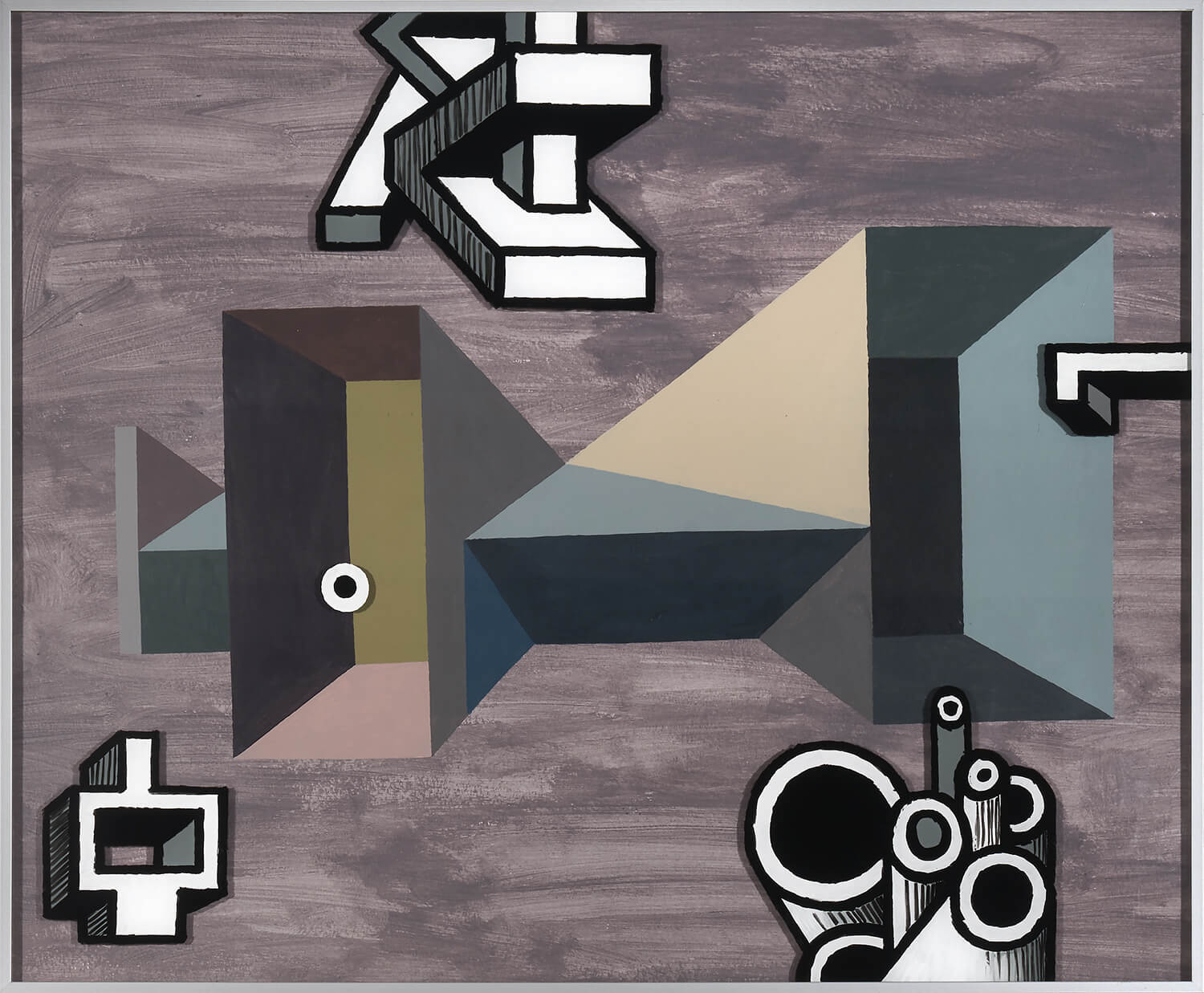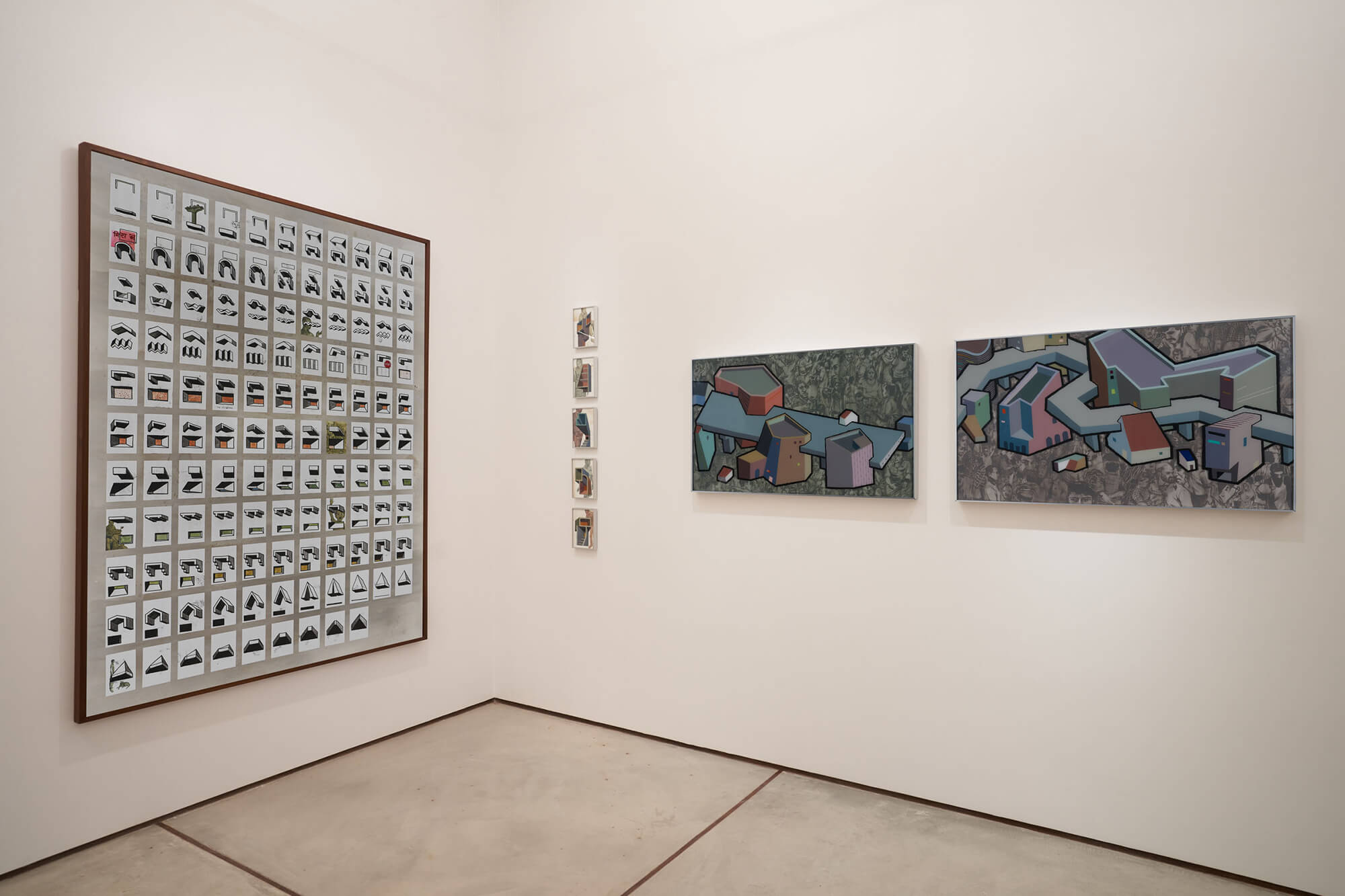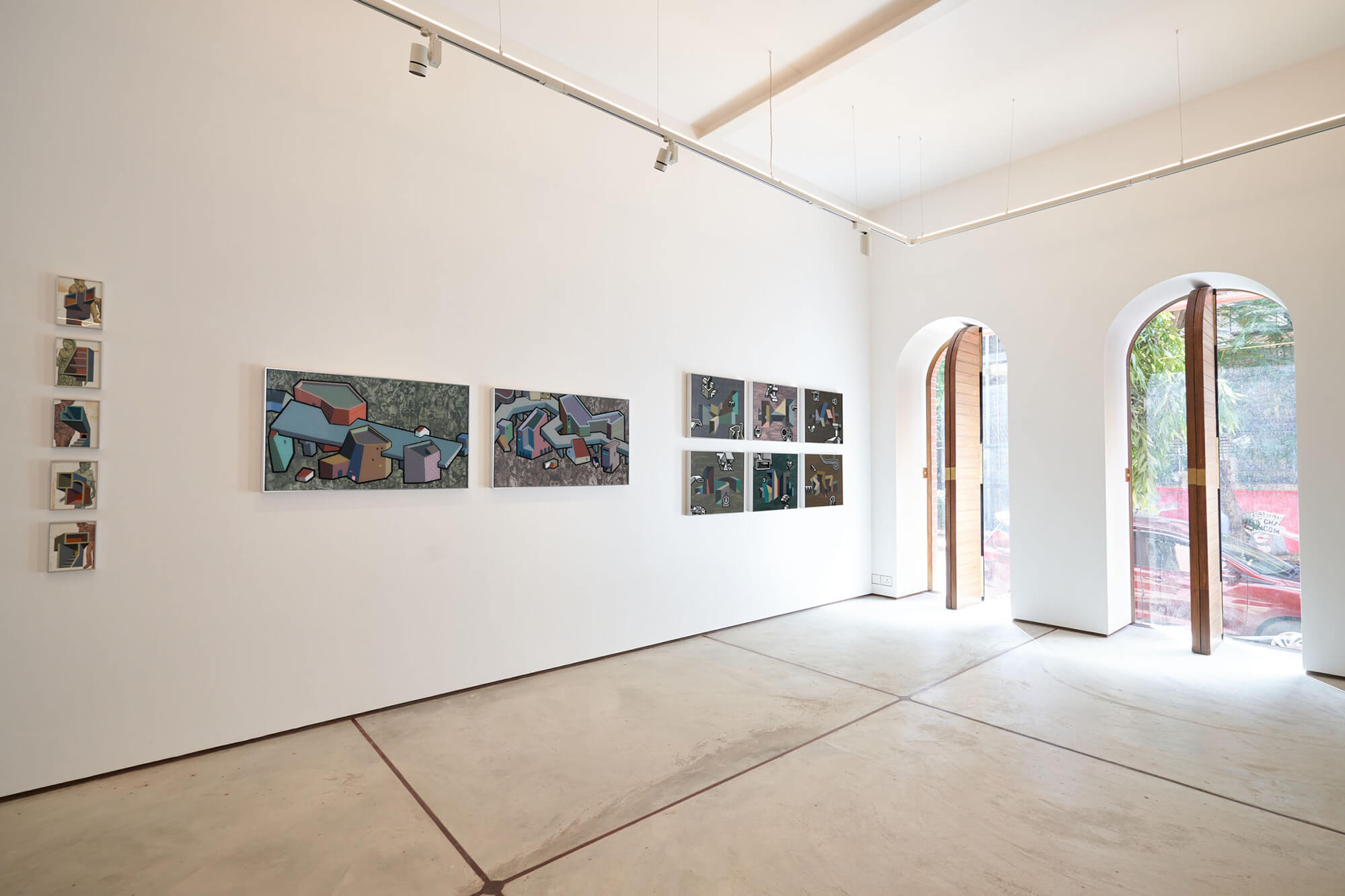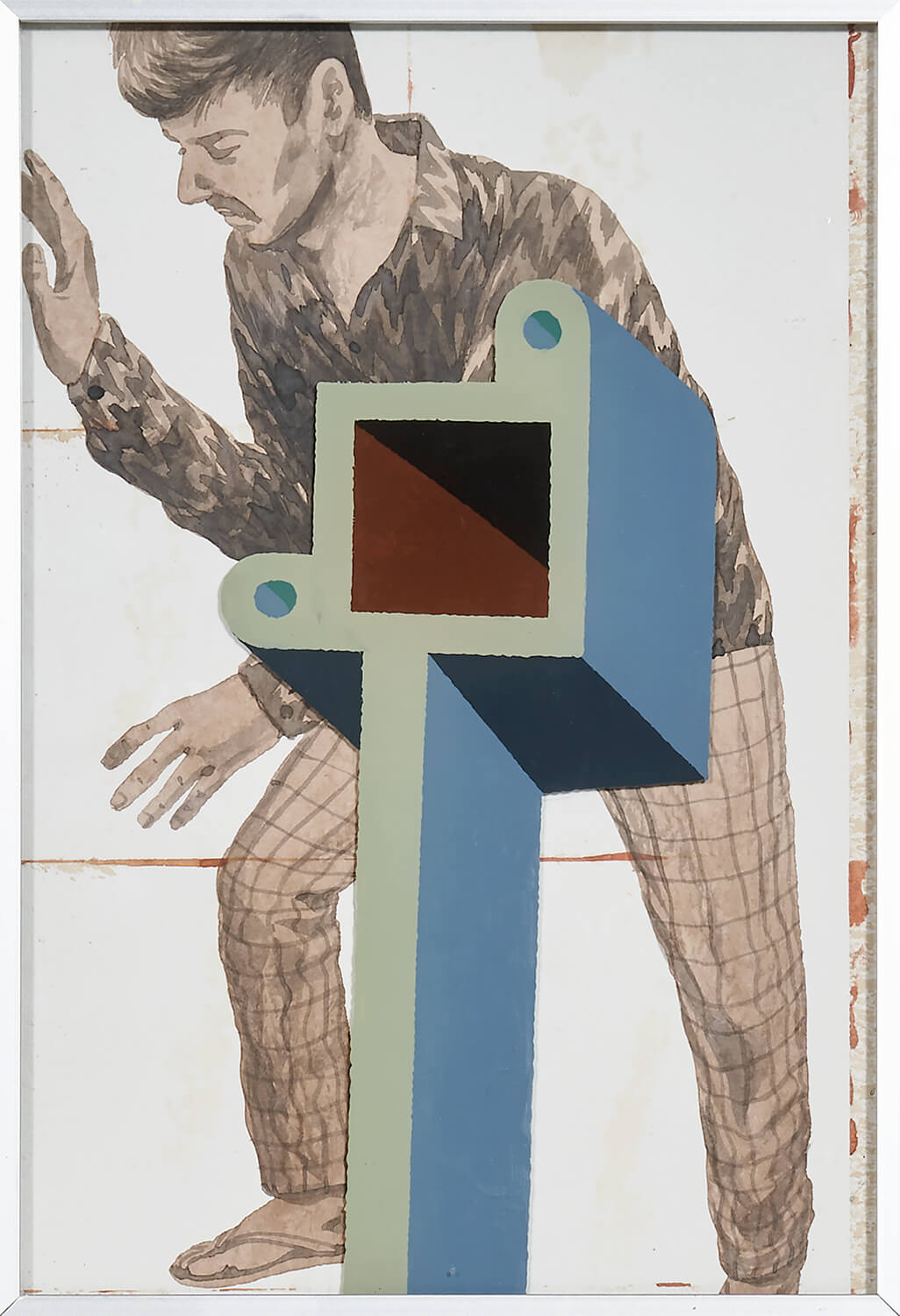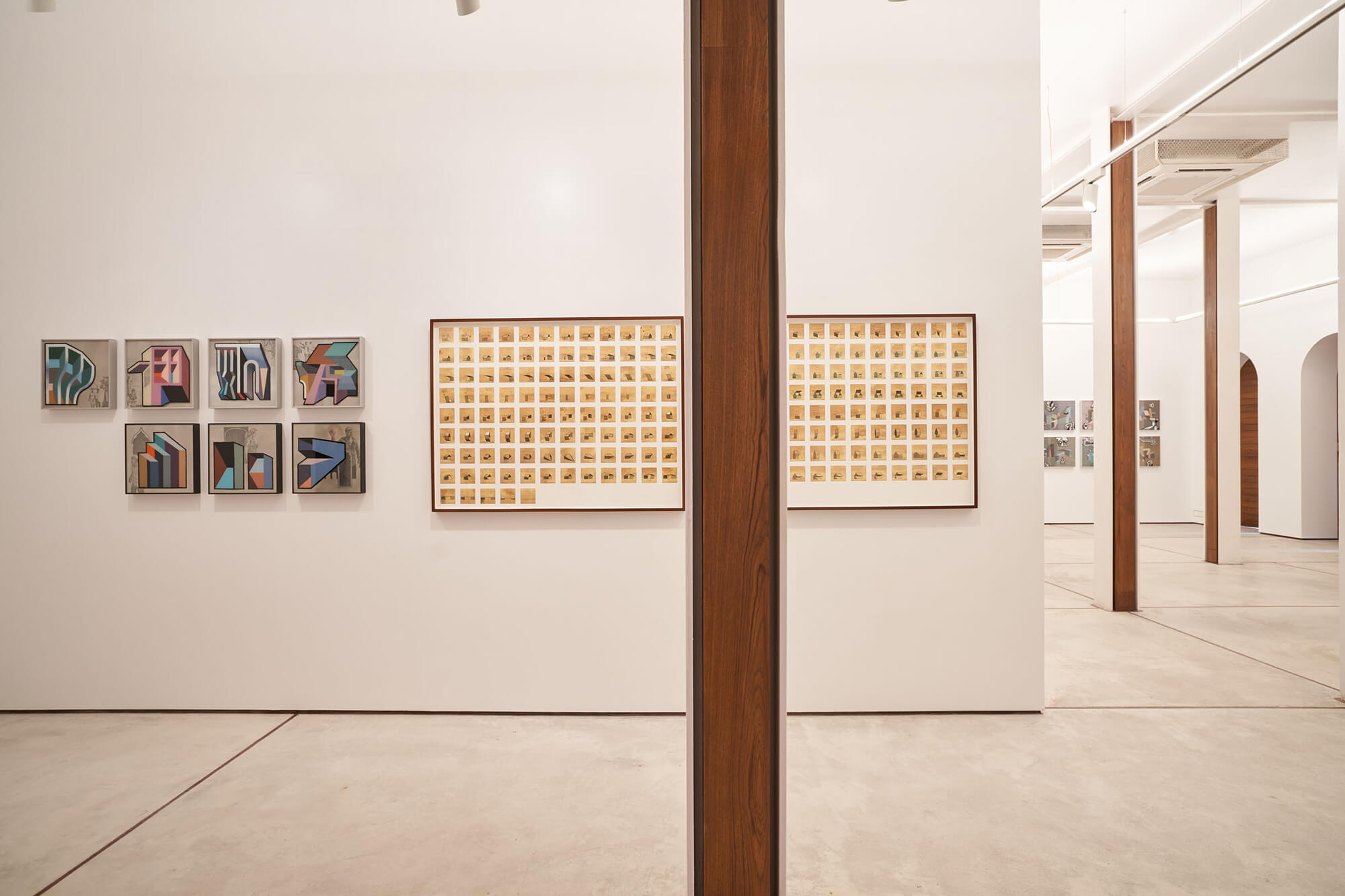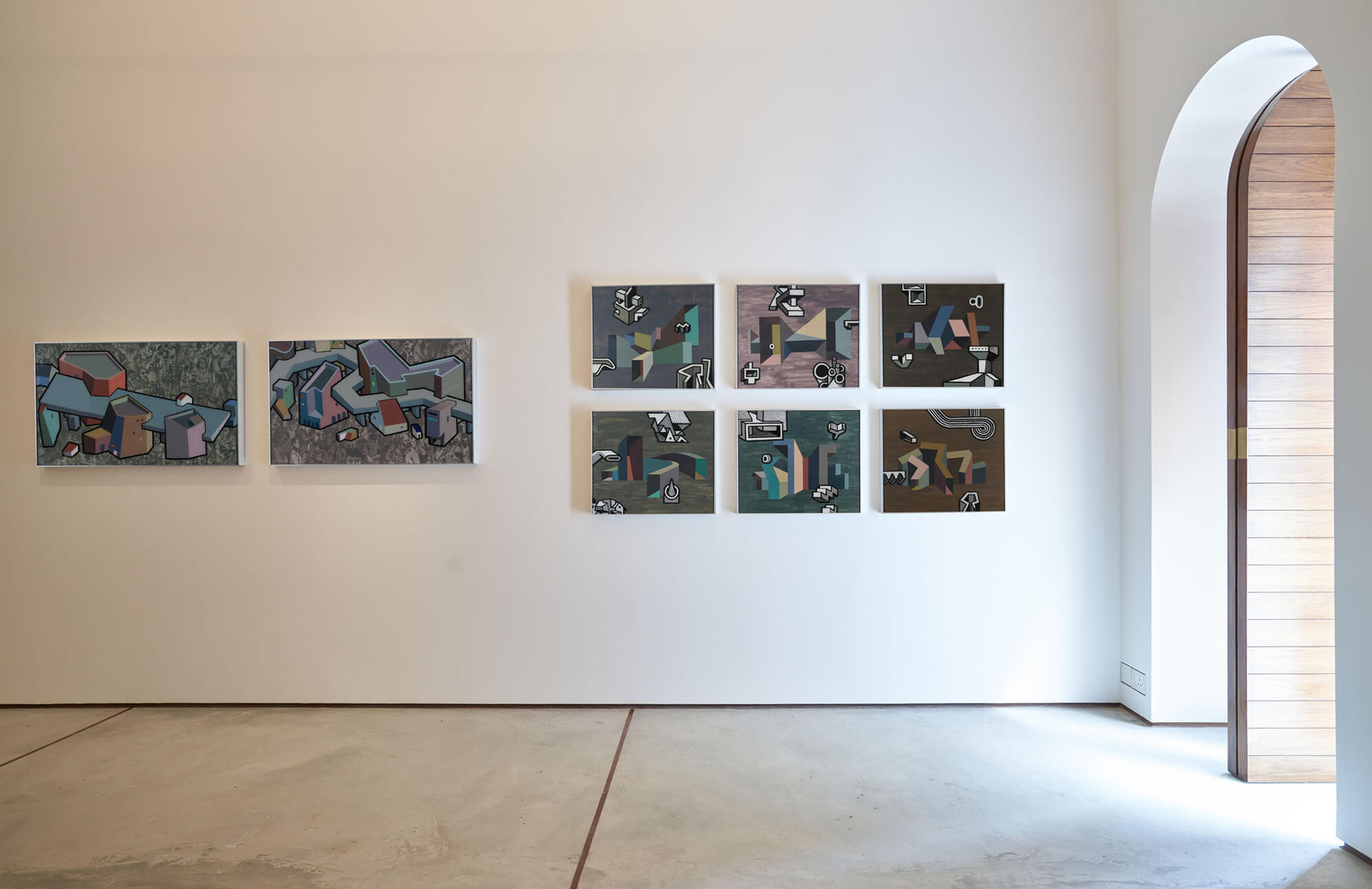Edifice Complex
Edifice Complex – a solo show at TARQ, Mumbai
13th April – 10th June 2023.
TARQ. Ground Floor, KK (Navsari) Chambers, 39B, AK Nayak Marg, Azad Maidan, Fort, Mumbai, Maharashtra 400001
Scroll down for Rahul Mehrotra’s text from the show catalogue and for the text from the gallery.
…..
Propelled by the Tyranny of Images:
Edifice Complex captures Urban India, in the 2020s, and all the physical as well as visual disruptions that characterize this emerging landscape. Here contradictions coalesce in a landscape of incredible pluralism charged with polarities. With the emergence of a post-industrial service-based economy in Indian cities, urban space has been fragmented and polarized with the rich and poor jostling for access to amenities. Today the major state-directed projects are highways, flyovers, etc. which connect urban centers but sadly don’t contribute to determining or guiding their physical structure. In fact, cities and their burgeoning peripheries have become sites for the shifting of responsibilities and concurrently an evolving relationship between the private and the public. In contemporary India private capital chooses to build environments that are insulated from their context, without the burdens of facilitating citizenship or place-making necessary in a real city. These gated communities take the form of vertical towers in the inner city and sprawling suburban compounds on the peripheries.
This is precisely what Sameer Kulavoor’s installations capture so poignantly. The simultaneous rejection and embrace of these two aspirations where the ‘edifice’ of neoliberal capital emerges from the remains of the past. Here architecture in all its distorted forms struggles to become the spectacle of the city devoid of any recognition of the integrity of the context it occupies. Kulavoor captures the landscapes of hyper-consumption, fueled by a rapidly growing economically mobile middle class, which is resulting in the construction of a new landscape of global derivatives or the images of globalization or what he chooses to refer to as the edifice complex – albeit representing the power of global capital. And it is an irony – that of the collusion of consciously dysfunctional land markets and exclusionary design and planning at multiple scales that has created a deeply conflicted fabric which Kulavoor so daringly presents to us for reflection. He implicitly challenges the idea of the world-class city and foregrounds the built form of the city that results from this attitude of a complete detachment from its ambient environment as well as the place and community which it is meant to serve. Furthermore, its tectonic quality and materiality is represented in stark terms by Sameer Kulavoor – a complete detachment from the array of textures that might make a real place.
This then is the city driven by the tyranny of images. Images that travel across the global translating and transfusing their meanings depending on where they land. Images that propel entire cities to remake themselves and most often building on traces that never go away. The tyranny of images is what makes cities so similar and yet so different. Similar because they are driven by the ‘edifice complex’. Different because the traces that these images rest on are often vastly different. The resistances these traces provide create startlingly different juxtapositions of the old and the new, the foreign and the local, the material and the immaterial and most importantly the differences exemplified by the people who occupy these places. The tyranny of image in the most recent manifestation of globalization, runs concurrently with the history of the making of centers of capital and their circulation in the global economy. The presence of the ‘edifice complex’ in Manhattan, New York, that grew naturally out of the accumulation of capital then circulated around the globe. Singapore wanted to be the Manhattan of Asia and then Shanghai wanted to be the Singapore of China. Politicians and Capitalists in India want to make Mumbai Shanghai and then, for example Nasik aspires to be Mumbai and the small towns near Nasik then aspire to be Nasik and so on. This circulation of images or the tyranny of these images and the way they propel the way cities are made and most recently are being made in India is noteworthy. Sameer Kulavoor presents this emerging palimpsest to us precisely, provocatively, and poetically – for consumption, reflection and perhaps action?
Rahul Mehrotra
May 2023
Metromorphosis, 2022, forms the basis of Rahul Mehrotra’s essay Propelled by the Tyranny of Images, 2023.
——-
Sameer Kulavoor’s practice encompasses his unique observations of spaces, structures and geographies. These nuanced compositions, featuring sequential drawings and reverse painted transparent sheets, underscore his affinity towards cities and their multi-layered identities. In this exhibition, architecture is once again the main protagonist. The city in question is an unnamed, ubiquitous entity. A place where design and architecture are born out of responsiveness and resourcefulness rather than a result of extensive detailed pre-planning. Here, sophisticated design principles are thrown to the wind and built structures are mutating beings, growing and adapting to the needs and aspirations of the lives lived within.
The title ‘Edifice Complex’ is borrowed from a phrase coined by Behn Cervantes, a Filipino activist writing in the time of the autocrat Ferdinand Marcos. It references the phenomenon where individuals, organisations, or governments become obsessed with building grandiose structures to give an impression of power, status or progress, often at the expense of more pressing needs. Kulavoor’s works explore this theme, particularly in the context of post-independence aspirations taking the shape of structures built in “tier-one” and “tier-two” towns across India. In these new post-modern structures, he found a distinct visual language that reminded him of the works of the Milan based group, Memphis Milano – a rambunctious counter to the seriousness of Bauhaus and Modernism, Incidentally, Ettore Sottsass, the founding member of the group was, in fact, inspired by his visits to Tiruvannamalai, India in the sixties and seventies- before he founded Memphis Milano in the nineteen eighties.
The exhibition presents a body of work across six series. With Drawn Timelapses, a series of sequential drawings that are presented in tandem with a video, Kulavoor reflects on the idea of condensed time, with structures being in a constant state of flux. Here, the artist shares a zoomed-in experience of elements that form complex city structures and their temporal progression. Each drawing on a single page is created in relation to the one that came before it, thus developing a moving image.
Discomfort (2022) (a series initiated during the first Covid-19 lockdown and part of his previous solo – You Are All Caught Up), looks at the basic shape of a home morphing from one uncomfortable form to another – examining its transformation through time – physically as well as through lived experience.
Kulavoor has also experimented with reverse painting with acrylic and oil markers on glass sheets for the first time in the series Dense City, Tech Park, Retrofits and Outside The Gated Community – a reminder of the ubiquitous glass sheet cladding, enveloping several new structures. The works point to the transformation of these structures from opaque mirrors of their surroundings during the day to transparent windows at night.
Displayed in TARQ’s new home, this body of work places urban structures firmly in the foreground transferring the focus from the people that inhabit the city to the city itself.
– Text from the gallery, TARQ.
All images and site content copyright ©️ 2010-2022 Sameer Kulavoor.
